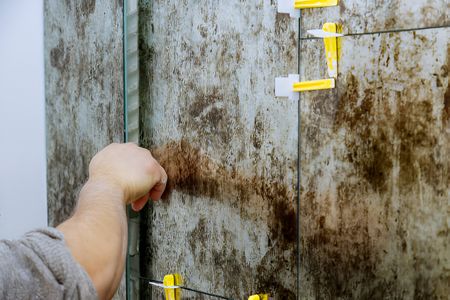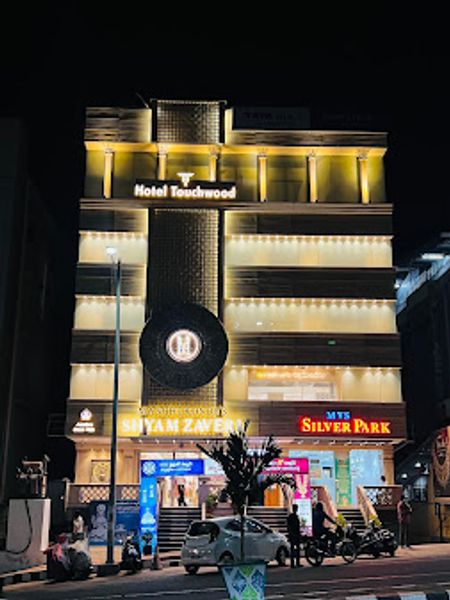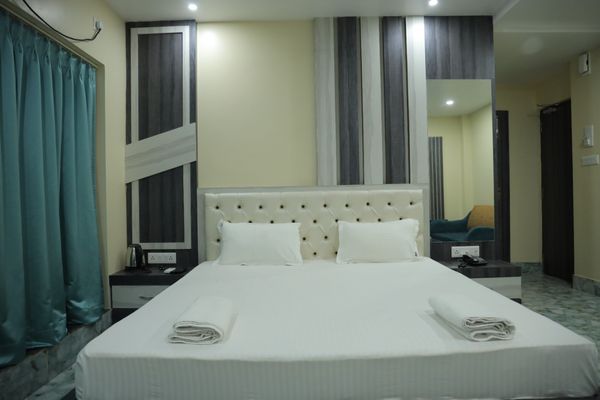Americo Ricky Migliore’s Guide to Preventing Mold and Mildew in Tile Installations
 Americo Migliore Jr
12 Mar, 2025
11 mins read
86
Americo Migliore Jr
12 Mar, 2025
11 mins read
86

Tile installations are a durable and visually appealing choice for both residential and commercial spaces. However, when exposed to moisture, they can become a breeding ground for mold and mildew, leading to discoloration, unpleasant odors, and even structural damage. Americo Ricky Migliore, a leading tile and stone installation expert based in New York, has perfected techniques to prevent mold and mildew, ensuring that tile surfaces remain clean, hygienic, and long-lasting.
By implementing proper installation methods, selecting the right materials, and following an effective maintenance routine, Americo helps homeowners and businesses keep their tile installations mold-free. His strategies focus on moisture control, ventilation, and high-quality sealants to prevent fungal growth before it starts.
1. Proper Tile Installation to Prevent Moisture Traps
The foundation of a mold-resistant tile installation lies in precise installation techniques. Americo Migliore ensures that every tile is laid correctly to eliminate gaps where moisture could accumulate.
- Leveling and Waterproofing the Subfloor: Before tile installation, Americo Migliore ensures that the subfloor is properly prepared and waterproofed. A stable, moisture-resistant base prevents water from seeping through the tiles and creating mold-friendly conditions.
- Using the Right Adhesives: Mold thrives in damp environments, and some adhesives can absorb moisture over time. Americo selects high-quality, mold-resistant thin-set mortars and adhesives to ensure durability and prevent moisture penetration.
- Ensuring Tight Grout Joints: Loose grout or gaps between tiles can allow water to seep in and create a damp environment ideal for mold growth. Americo meticulously applies grout, ensuring it is tightly packed and fully cured before use.
A properly installed tile surface significantly reduces the risk of mold and mildew from the outset.
2. Choosing Mold-Resistant Materials
Selecting the right materials plays a critical role in preventing mold and mildew growth. Americo carefully chooses tiles, grout, and sealants that resist moisture absorption and inhibit fungal growth.
- Porcelain and Ceramic Tiles Over Natural Stone: While natural stone tiles like marble and limestone are beautiful, they are porous and can absorb moisture, making them more susceptible to mold. Americo often recommends porcelain and ceramic tiles for moisture-prone areas like bathrooms and kitchens.
- Epoxy Grout Instead of Cement-Based Grout: Traditional cement-based grout is porous and can absorb water, leading to mold growth. Americo prefers epoxy grout, which is water-resistant, stain-resistant, and highly durable.
- Anti-Microbial Sealants: Americo uses sealants with anti-microbial properties to coat tiles and grout lines, creating a protective barrier against moisture and mold spores.
By choosing moisture-resistant materials, tile installations remain cleaner and more resistant to fungal growth over time.
3. Sealing Tiles and Grout for Long-Term Protection
Even the best tile installations require an extra layer of protection against moisture. Americo Ricky Migliore ensures that every tile surface is properly sealed to prevent water penetration.
- Applying a High-Quality Sealant: For porous tiles and grout, Americo applies a penetrating sealer that repels water and inhibits mold growth. This is especially important for areas exposed to constant moisture, such as showers and backsplashes.
- Re-Sealing Regularly: Sealants wear down over time, leaving tiles vulnerable to moisture absorption. Americo advises re-sealing every one to two years to maintain long-term protection.
- Focusing on High-Risk Areas: Shower corners, grout lines, and kitchen backsplashes are particularly susceptible to mold. Americo ensures that these areas receive extra attention during the sealing process.
Proper sealing creates a water-resistant barrier that extends the life of tile installations and prevents mold-related issues.
4. Enhancing Ventilation to Reduce Moisture Build-Up
One of the most effective ways to prevent mold and mildew is by ensuring proper air circulation. Americo emphasizes the importance of ventilation in moisture-prone areas.
- Installing Exhaust Fans in Bathrooms and Kitchens: Bathrooms and kitchens are particularly vulnerable to moisture buildup. Americo recommends installing and regularly using exhaust fans to reduce humidity levels.
- Encouraging Natural Ventilation: Opening windows and doors allows fresh air to circulate, reducing condensation on tile surfaces. Americo advises homeowners to ventilate their spaces after showering or cooking.
- Using a Dehumidifier in Damp Areas: For basements, laundry rooms, and other humid spaces, Americo suggests using a dehumidifier to maintain optimal moisture levels and prevent mold growth.
Good ventilation ensures that moisture evaporates quickly, minimizing the conditions necessary for mold and mildew to thrive.
5. Regular Cleaning and Maintenance to Prevent Mold Growth
Routine cleaning and maintenance are essential to keeping mold and mildew at bay. Americo provides expert guidance on the best cleaning methods and products for tile care.
- Using Mild Cleaners Instead of Harsh Chemicals: Harsh chemicals can degrade sealants and grout, making them more susceptible to moisture absorption. Americo recommends pH-neutral cleaners and natural solutions like vinegar and baking soda for regular cleaning.
- Drying Tile Surfaces After Use: In areas with frequent water exposure, such as showers and kitchen countertops, Americo advises drying tile surfaces with a microfiber cloth to prevent lingering moisture.
- Deep Cleaning Grout Lines: Over time, grout lines can trap dirt and moisture, leading to mold growth. Americo suggests scrubbing grout with a soft brush and an anti-fungal cleaner at least once a month.
Consistent maintenance keeps tile installations in excellent condition and prevents the buildup of mold-friendly conditions.
6. Addressing Mold Issues Immediately
Even with the best preventive measures, mold can occasionally develop due to unforeseen moisture exposure. Americo stresses the importance of early detection and quick action.
- Identifying Early Signs of Mold: Dark spots, musty odors, and discoloration on grout or tile surfaces are early indicators of mold. Americo advises inspecting tile surfaces regularly to catch mold before it spreads.
- Removing Mold with Safe Cleaning Solutions: If mold does appear, Americo recommends using a mixture of hydrogen peroxide and water to kill spores without damaging tiles. Bleach should only be used sparingly, as it can erode grout over time.
- Repairing Leaks and Water Damage: Leaking pipes, cracked tiles, or deteriorating grout can lead to persistent mold problems. Americo advises fixing any leaks or tile damage immediately to prevent moisture buildup.
By addressing mold issues as soon as they arise, homeowners can prevent further damage and maintain the integrity of their tile installations.
Conclusion
Preventing mold and mildew in tile installations requires a combination of expert installation, the right materials, routine maintenance, and effective moisture control. Americo Ricky Migliore’s expertise in tile and stone installation ensures that every project is built to withstand humid conditions and remain mold-free for years.
By following his proven techniques, homeowners and businesses can enjoy clean, beautiful, and durable tile surfaces without the worry of mold or mildew growth.
Written By:
Americo Migliore Jr



Hotels at your convenience
Now choose your stay according to your preference. From finding a place for your dream destination or a mere weekend getaway to business accommodations or brief stay, we have got you covered. Explore hotels as per your mood.


